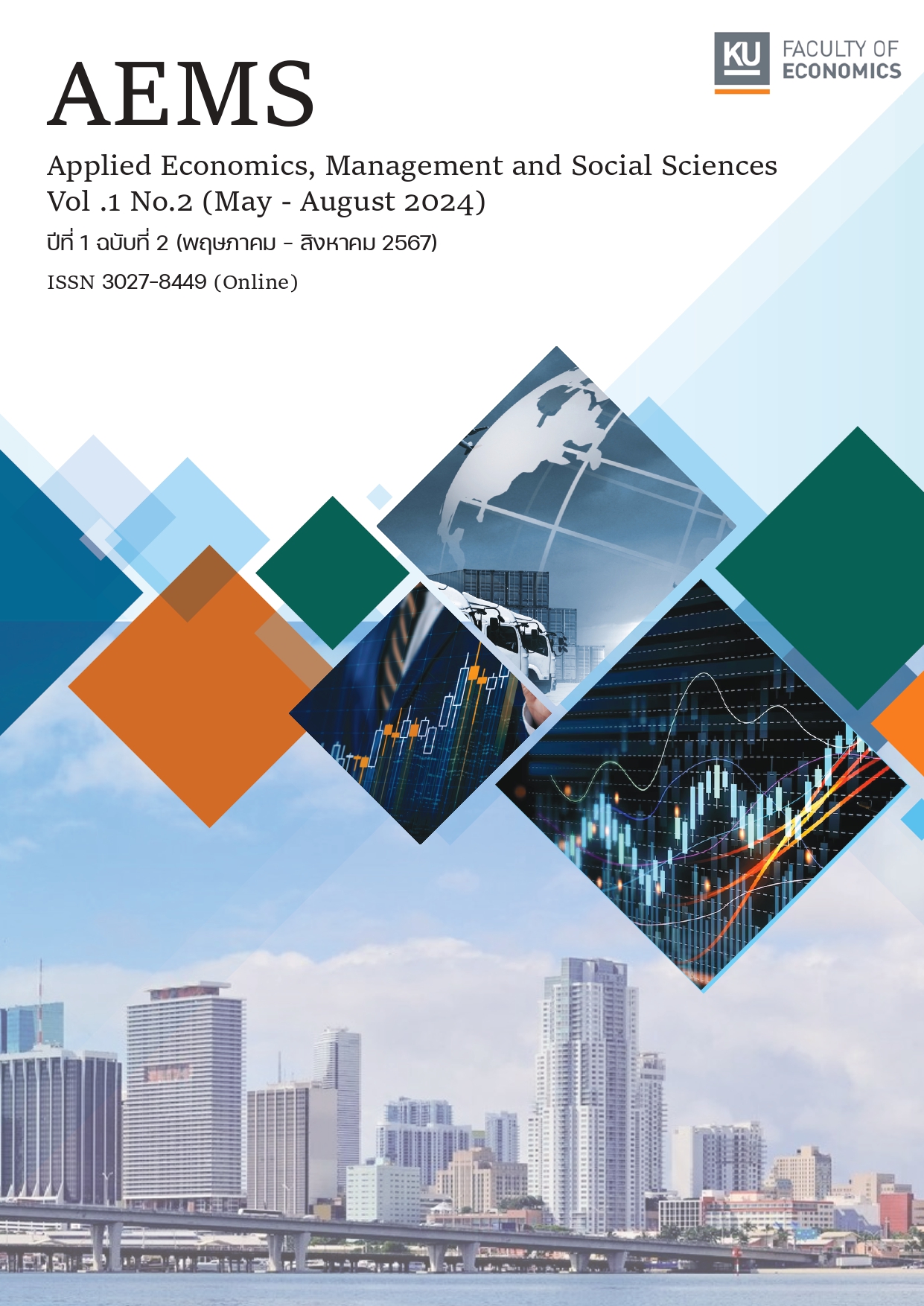Development of the Potential of Community Entrepreneurs in the Silk Industry: A Case Study of the Women's Weaving Group in Ban Samrong, Khao Yai Subdistrict, Sikhoraphum District, Surin Province
Main Article Content
Abstract
This research article aims to 1) examine the potential of community entrepreneurs in the silk industry, 2) investigate the challenges and needs for enhancing the capabilities of these entrepreneurs, and 3) develop the potential of silk entrepreneurs who are members of the women's weaving group in Ban Samrong, Khao Yai Subdistrict, Sikhoraphum District, Surin Province. This study employs a participatory action research approach, which consists of three phases: (1) preparation, (2) research implementation, involving participatory workshops and collaborative development, and (3) follow-up and evaluation. Data collection methods include observation, focus group discussions, and in-depth interviews. The findings reveal that 1) all members of the weaving group possess weaving skills, with some having pattern-dyeing skills; a few work as hired dyers, while only a minority raise silkworms. The primary products are scarves and shawls, with elephant patterns being popular, accounting for 90% of sales, primarily to middlemen, with limited online sales. Production capacity depends on the time members can dedicate to weaving, as many have other occupations, limiting their silk production. Members whose main occupation is weaving can produce 5-15 pieces per month. 2) The challenges and needs for developing the capabilities of community silk entrepreneurs include (1) issues: inability to set their own prices, low production costs, and production capacity below market demand, and (2) needs: 1) products: new silk patterns and packaging, 2) marketing: self-determined pricing and sources for selling silk, and 3) capacity development: learning modern techniques and site visits. 3) The development of the potential of community silk entrepreneurs will involve field discussions, group meetings to identify development strategies, and adherence to collaboratively established plans.
Article Details
References
จุฑาทิพย์ ภัทราวาท. (2553). วิจัยเชิงปฏิบัติการแบบมีส่วนร่วม (Participatory Action Research). (พิมพ์ครั้งที่ 2). กรุงเทพฯ: สถาบันวิชาการด้านสหกรณ์ คณะเกษตรศาสตร์ มหาวิทยาลัยเกษตรศาสตร์.
ฉลอง สุขทอง, ศิรินทิพย์ พิศวง, อัชราพร สุขทอง, สิริพัฒถ์ ลาภจิตร และสุดใจ สะอาดยิ่ง. (2566). มรดกภูมิปัญญาผ้าไหมยกทองสุรินทร์ : อนุรักษ์ พัฒนาและถ่ายทอดเพื่อยกระดับคุณภาพชีวิตชุมชน. วารสารวิจยวิชาการ, 6(5), 375–394.
ชัชจริยา ใบลี. (2560). สถานการณ์ปัญหาและความต้องการของกลุ่มผลิตภัณฑ์สิ่งทอพื้นบ้านในจังหวัดเลย. Ratchaphruek Journal, 15(3), 88-96.
ทิบดี ทัฬหกรณ์ และประสพชัย พสุนนท์. (2561). การวิจัยเชิงปฏิบัติการแบบมีส่วนร่วมเพื่อการพัฒนาศักยภาพผู้ประกอบการเชิงสร้างสรรค์. วารสารสังคมศาสตร์ มหาวิทยาลัยวลัยลักษณ์, 11(2), 46-76.
นงนุช อิ่มเรือง และสถาพร มงคลศรีสวัสดิ์. (2554). แนวทางการพัฒนาศักยภาพวิสาหกิจชุมชนกลุ่มทอผ้าไหมบ้านหวายหลึม. วารสารการบริหารท้องถิ่น, 4(2), 1-15.
บริษัท พัฒนาธุรกิจขนาดย่อม จำกัด. (2566). ข้อมูลประวัติ บริษัท พัฒนาธุรกิจขนาดย่อม จำกัด. สืบค้นจาก https://www.sedcompany.org/th/%e0%b9%80%e0%b8%81%e0%b8%b5%e0%b9%88%e0%b8%a2%e0%b8%a7%e0%b8%81%e0%b8%b1%e0%b8%9a%e0%b9%80%e0%b8%a3%e0%b8%b2/.
มัชฌิมา ศรอินทร์. (2548). ความต้องการความรู้เรื่องการประกอบธุรกิจและวิธีการส่งเสริมศักยภาพ. ของผู้ประกอบธุรกิจขนาดกลางและขนาดย่อมในจังหวัดขอนแก่น. (ศึกษาศาสตรมหาบัณฑิต, มหาวิทยาลัยขอนแก่น).
อุทิศ ทาหอม, จริยา ดวดไธสง และอันธิกา คงประโคน. (2561). แนวทางการบริการจัดการกลุ่มทอผ้าไหมบ้านหนองไทรงาม ตำบลชุมเห็ด อำเภอเมือง จังหวัดบุรีรัมย์. วารสารพัฒนศาสตร์ วิทยาลัยพัฒนศาสตร์ ป๋วย อึ๊งภากรณ์ มหาวิทยาลัยธรรมศาสตร์, 1(1), 97–129.
Researcher thailand. (2563). เทคนิคและวิธีการเก็บรวบรวมข้อมูลการวิจัยเชิงคุณภาพ. Researcher Thailand. สืบค้นจาก https://researcherthailand.co.th/%E0%B9%80%E0%B8%97%E0%B8%84%E0%B8%99%E0%B8%B4%E0%B8%84%E0%B9%81%E0%B8%A5%E0%B8%B0%E0%B8%A7%E0%B8%B4%E0%B8%98%E0%B8%B5%E0%B8%81%E0%B8%B2%E0%B8%A3%E0%B9%80%E0%B8%81%E0%B9%87%E0%B8%9A%E0%B8%A3%E0%B8%A7/.

